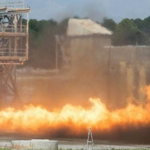

From saving lives with weather stations and collecting weather data to studying hail and delivering accurate forecasts, 3D printing and 3D technologies have often been used for applications in weather research. Currently, some of the most remote locations on our planet are experiencing change that could have widespread and potentially devastating impacts. To prepare, NASA is set to launch two satellite missions this year, in addition to conducting field research that will give scientists a better view of Earth’s frozen regions – made up of glaciers, ice sheets, permafrost, sea ice, and snow cover – known collectively as the cryosphere.
One of the ways NASA studies the cryosphere is through snowflake research – particularly how snow melts. With a better understanding of melting snow, scientists can learn to improve prediction science by recognizing the signature in radar signals of wet, heavy snow, the type of precipitation that can lead to broken tree limbs and power lines.
A newly released video, developed by Jussi Leinonen of NASA’s Jet Propulsion Laboratory (JPL) in California, visualizes the first 3D numerical model of snowflakes actively melting in the atmosphere. It’s the first study that simulates the melting of snowflakes in 3D by replicating the physical processes on a computer.
In the higher atmosphere, where temperatures are much colder, raindrops begins their lives as snowflakes, which melt as they descend into areas with above-freezing temperatures. But melting snowflakes can cause all sorts of problems, from blocking radio signals and affecting weather patterns to potential aircraft hazards. Using Leinonen’s new 3D model, which replicates important features of melting snowflakes, researchers can gain a better understanding of of the melting process itself, and how the type of snowflake can affect it.
Leinonen and Annakaisa von Lerber from Aalto University in Finland recently published a paper on the numerical model, titled “Snowflake melting simulation using smoothed particle hydrodynamics,” in the Journal of Geophysical Research – Atmospheres. The study could ultimately help researchers create better models to show how melting snowflakes interact with radar and telecommunication signals.
The abstract reads, “Motivated by the need to understand the microphysics and improve the remote sensing of the melting layer of precipitation, we have developed a numerical 3‐D model for the melting of single snowflakes. The model uses the smoothed particle hydrodynamics method and is forced by surface tension that controls the flow of meltwater on the ice surface. Heat transfer from the environment to the snowflake is simulated with a Monte Carlo scheme. In model experiments with snowflakes of various sizes and densities, we observed that the meltwater tends to initially gather in concave regions of the snowflake surface. These liquid water regions merge as they grow, and as meltwater is added, they form a shell of liquid around an ice core. This eventually develops into a water drop. The observed features during melting are consistent with experimental findings from earlier research, which suggests that the model is adequate for exploring the physics of snowflake melting. The principal remaining uncertainties arise from the omission of aerodynamic forces from the model. The results suggest that the degree of riming has a significant influence on the melting process: During initial melting, liquid water is apparent on the surface of unrimed or lightly rimed particles, while rime provides a porous structure that can absorb a relatively large amount of meltwater. Riming also strengthens the connections between different parts of the snowflake, making rimed snowflakes less prone to breakup during melting, while unrimed ones break up rather easily.”

As the 3D simulation shows, meltwater will first gather on the surface of a snowflake in concave, liquid-water regions. Then, the regions will merge together and form a liquid shell around an ice core, before finally turning into a water droplet. The one-centimeter-long 3D snowflake model in the video is made up of many individual ice crystals. When they collide in midair, the crystals’ arms get tangled together.
In a top to bottom atmospheric radar profile, a prominent, extremely bright layer – far brighter than surrounding atmospheric layers – is visible at the altitude where falling hail and snow melt.
Leinonen explained, “The reasons for this layer are still not particularly clear, and there has been a bit of debate in the community.”
While simpler models will be better able to reproduce the bright melt layer, this detailed approach will help scientists understand just how the layer is related to the particular type of melting snow, and the radar wavelengths that researchers use to observe it.
Over the next year, NASA will be providing the world with an inside look at the research it’s conducting to learn more about this important component of Earth.
Discuss this and other 3D printing topics at 3DPrintBoard.com or share your thoughts below.
[Source/Images: NASA JPL]
If you're looking for affordable 3D visualization services in the USA, our platform provides an ideal solution for all your architectural and real estate needs. Through our service, you can access high-quality 3D renderings at competitive prices without compromising on quality. Whether you need interior visualizations, exterior renderings, or architectural animations, our team ensures that you get professional results that fit within your budget. With our support, you can make your projects visually stunning while saving on costs, all with a quick and straightforward process.
Through our site, you can easily order affordable 3D visualizations for your projects, whether for a residential property, commercial development, or architectural design. We understand the importance of staying within budget, and that's why we offer tailored solutions to ensure you get the best value for your investment. Our experts work efficiently to provide you with realistic, photorealistic 3D images that will elevate your presentations and attract clients, making your property stand out in the market.






